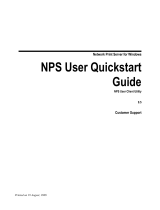
Here is a list of the printers supported by the xpps_for_mac.sit download
and the PPDs they require.
PPD Printer PPD Printer
XDC2045.PPD Xerox DC2045 NPS/IPS PS2 xrdc0451.ppd Xerox DocuColor 2045
XDC2060.PPD Xerox DC2060 NPS/IPS PS2 xrdc0601.ppd Xerox DocuColor 2060
xdp100.ppd Xerox DocuPrint 100 NPS PS2 xrdcig31.ppd Xerox DocuColor iGen3
xdp115.ppd Xerox DocuPrint 115 NPS PS2 xrdp0651.ppd Xerox DocuPrint 65
xdp135.ppd Xerox DocuPrint 135 NPS PS2 xrdp0751.ppd Xerox DocuPrint 75
xdp155.ppd Xerox DocuPrint 155 NPS PS2 xrdp0901.ppd Xerox DocuPrint 90
xdp180.ppd Xerox DocuPrint 180 NPS PS2 xrdp1002.ppd Xerox DocuPrint 100 EPS
xdp4050.ppd Xerox DocuPrint 4050 NPS PS2 xrdp1152.ppd Xerox DocuPrint 115 EPS
xdp4090.ppd Xerox DocuPrint 4090 NPS PS2 xrdp1352.ppd Xerox DocuPrint 135 EPS
xdp4635.ppd Xerox DocuPrint 4635 NPS PS2 xrdp1552.ppd Xerox DocuPrint 155 EPS
xdp4850.ppd Xerox DocuPrint 4850 NPS PS2 xrdp1802.ppd Xerox DocuPrint 180 EPS
xdp4890.ppd Xerox DocuPrint 4890 NPS PS2 xrdp3503.ppd Xerox DocuPrint 350
xdp92c.ppd Xerox DocuPrint 92C NPS PS2 xrdp4251.ppd Xerox DocuPrint 425
xdp96.ppd Xerox DocuPrint 96 NPS PS2 xrdp5003.ppd Xerox DocuPrint 500
xrd10002.ppd Xerox DocuPrint 1000 xrdp7002.ppd Xerox DocuPrint 700
xrd13003.ppd Xerox DocuPrint 1300 Plus xrdp8501.ppd Xerox DocuPrint 850
xrd60601.ppd Xerox DocuColor 6060 xrdp9003.ppd Xerox DocuPrint 900 Plus
xrd60654.ppd Xerox DocuTech 65 xrdt1355.ppd Xerox DocuTech 135
xrd60752.ppd Xerox DocuTech 75 xrk60651.ppd Xerox DocuTech 65-KANJI
xrd60901.ppd Xerox DocuTech 90 xrk60751.ppd Xerox DocuTech 75-KANJI
xrd61003.ppd Xerox DocuTech 6100 xrk60901.ppd Xerox DocuTech 90-KANJI
xrd61153.ppd Xerox DocuTech 6115 xrk61353.ppd Xerox DocuTech 6135-KANJI
xrd61357.ppd Xerox DocuTech 6135 xrk61553.ppd Xerox DocuTech 6155-KANJI
xrd61553.ppd Xerox DocuTech 6155 xrk61803.ppd Xerox DocuTech 6180-KANJI
xrd61804.ppd Xerox DocuTech 6180
Creating and Configuring the Macintosh Desktop Printers
24. Hold down the Command key while tapping the f key.
When the Sherlock utility opens, type Desktop Printer Utility in
the find field and tap the <return> key.
25. Double-click on the icon that represents the Desktop Printer Utility
application. You should see a
New Desktop Printer dialog.
26. Click on the up-down arrow , select the AdobePS driver.
For TCP/IP Connections
27. Select the Printer (LPR) protocol and then select the [OK] button.








